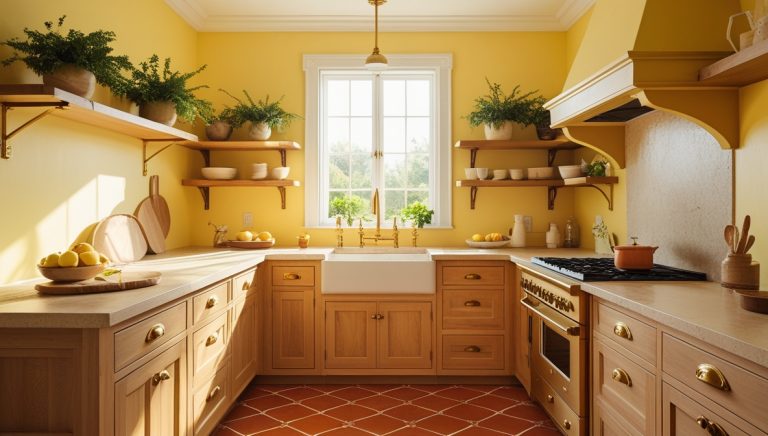Benefits of Natural Light in Home Interiors
Introduction
Natural light is one of the most powerful tools in interior design. It transforms spaces by influencing how we feel, how we use a room, and even how healthy we are. Incorporating abundant daylight into homes matters not only for beauty—it has measurable effects on mood, sleep, productivity, energy savings, and wellness. Understanding these benefits can help homeowners, architects, and designers make better decisions about windows, layouts, lighting, and materials.
Health & Psychological Benefits
One of the strongest benefits of natural light is its impact on mental well-being. Exposure to daylight boosts the production of serotonin, a hormone associated with mood elevation and calmness. Studies show that environments with abundant natural light tend to reduce stress, anxiety, and symptoms of depression, including seasonal affective disorder (SAD). World Health Network+3Healthline+3Solatube Australia+3
Natural light also plays a key role in regulating circadian rhythms—our internal sleep-wake cycle. Morning light in particular helps set this clock, signaling to our bodies when to wake and when to wind down. Good daylight exposure during the day is associated with better sleep quality, more regular sleep patterns, and feeling more rested. World Health Network+4ICTSD+4Ideal Home+4
Beyond mood and sleep, sunlight also supports vitamin D synthesis in the skin, which is important for bone health, immune function, and overall vitality. While dietary sources and safe sun exposure are important, having windows and daylight access helps ensure we get some of what we need. World Health Network+1
Visual Comfort, Aesthetics & Space Perception
Natural light improves visual comfort in ways that artificial lighting often cannot match. Daylight helps reduce glare and harsh contrasts, making tasks like reading, cooking, or working more comfortable. Soft, diffused daylight is gentler on the eyes, reducing eye fatigue and the stress caused by constant artificial lighting. ICTSD+2Ideal Home+2
Spaces with good natural light often appear larger, more open, and more inviting. Light bouncing off walls, ceilings, and reflective surfaces fills in corners that would otherwise look dark or cramped. Rooms that are well-lit tend to showcase colors, textures, finishes, and architectural detail more authentically. Everyday details like wood grain, rug patterns, or fabric textures look richer and more accurate under natural light. JCVPM Architect Design & Build+2Ideal Home+2
Energy Savings & Environmental Benefits
Using natural light reduces reliance on artificial lighting during daylight hours. This can lead to lower electricity bills and less environmental strain. Homes designed to maximize daylight through windows, skylights, and reflective surfaces tend to use less energy overall. JCVPM Architect Design & Build+2Ghar Plans+2
Furthermore, natural light can also help regulate indoor temperature. In colder months, sunlight streaming through windows can help warm interiors (if designed properly), reducing heating demands. In well-planned homes, daylight contributes to sustainability, lowering energy consumption and carbon footprint. JCVPM Architect Design & Build+1
Health & Indoor Environment
Sunlight has antimicrobial and mold-controlling effects: areas of the home that get sunlight tend to stay drier and less prone to mold and mildew, assuming good ventilation. This improves indoor air quality and reduces health risks associated with dampness or mold exposure. Ghar Plans+1
Natural light also supports living plants inside homes, which themselves contribute to better air quality, humidity regulation, and mood. Plants tend to thrive when they receive enough daylight, which in turn adds aesthetic and health benefits to the interior environment. McMurray & Members+1
Practical Design Applications
Maximizing natural light starts with architectural and layout decisions. Positioning main living spaces and high-use rooms (living rooms, kitchens, studies) to face directions that receive more sunlight, using larger windows and glazed doors, and minimizing obstructions (trees, buildings) can help. Skylights and light wells are useful in bringing daylight into deeper parts of a home. Reflective surfaces, light-colored walls and ceilings, and judicious use of glass can help distribute light more evenly. MSESJ+2Ideal Home+2
Window treatments also play a part: sheer curtains or blinds, windows without bulky obstructions, and avoiding heavy dark materials help allow more light. Mirrors placed opposite windows or light sources help bounce daylight into darker areas. Floor plans that avoid too many small enclosed rooms or partitions enable light to travel deeper into interiors.
Challenges & Considerations
While natural light offers many benefits, design must be balanced with challenges. Too much direct sun can cause glare, fade furnishings, and increase cooling needs in hot climates. Over-exposure to UV rays through windows can degrade fabrics or finishes over time unless protective glazing or treatments are used.
Also, orientation and climate matter: in some regions, sunlight paths and intensity differ seasonally. In very hot climates, large windows can overheat interiors unless balanced with shading, overhangs, or smart glazing. Privacy concerns sometimes require window placements that reduce daylight.
References
- “11 Things to Know About Natural Light and Your Health,” Healthline. Healthline
- “Natural Light: Enhancing Mental Health,” Management Strategies and Engineering Sciences. MSESJ
- “The benefits of natural light and simple ways to boost the amount of daylight in your home,” Ideal Home. Ideal Home
- “10 Benefits of Having Natural Lighting in the Home,” Solatube. Solatube
- “Being in natural light improves mood, increases happiness,” UCLA Health. UCLA Health
Conclusion
Natural light in home interiors offers far more than bright and pretty rooms. It enhances mental health, supports healthy sleep cycles, improves visual comfort, lowers energy costs, and contributes to a cleaner indoor environment. Thoughtful design that leverages daylight—through window placement, layout, materials, and finishing touches—can make a home healthier.





